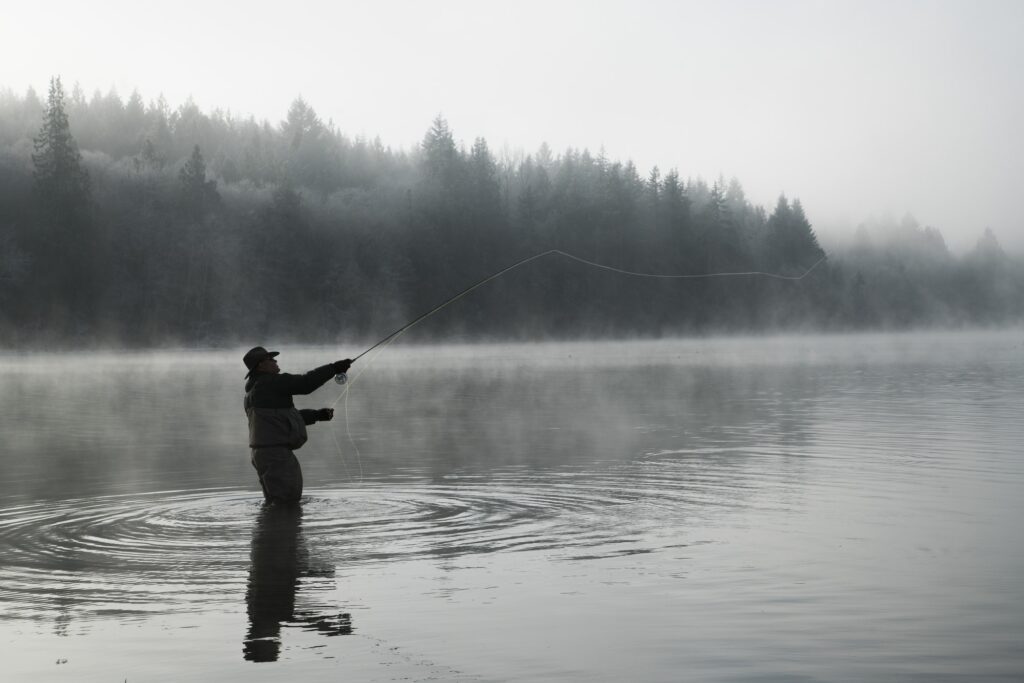Introduction to Stillwater Fly Fishing
Fly fishing in still waters, such as lakes and ponds, presents unique challenges and joys for anglers. Unlike the ever-changing currents of rivers and streams, still waters require a more nuanced approach to lure in the elusive fish. In this comprehensive guide, we’ll delve into the art of stillwater fly fishing, offering tips, techniques, and insights to elevate your fishing experience.
Understanding the Basics of Stillwater Fly Fishing
The Right Gear
Before setting out, it’s crucial to equip yourself with the right gear. A balanced fly rod, reel, and line are essential. For stillwater fishing, a 9 to 10-foot rod works well, providing the needed leverage for longer casts.
Choosing Flies
When it comes to selecting flies, consider the local insect life and fish feeding patterns. Patterns like nymphs, chironomids, and streamers are often effective in still waters.
Technique and Presentation
The key to success in stillwater fly fishing is understanding how to present the fly. Since there’s no current to help, your skill in casting and retrieving plays a pivotal role.
Advanced Strategies for Stillwater Fly Fishing
Reading the Water
Expert anglers know how to read the water, identifying areas where fish are likely to feed. Look for signs like rising fish, birds diving, or swarms of insects.
Seasonal Tactics
Adapt your approach with the seasons. Spring might call for fishing in shallower areas, while summer might require deeper techniques.
The Role of Patience and Persistence
Patience is a virtue in stillwater fly fishing. Sometimes, it’s about waiting for the right moment or persistently trying different spots and techniques.

Enhancing Your Stillwater Fly Fishing Skills
Practice Makes Perfect
Regular practice is crucial. Spend time honing your casting technique and experimenting with different flies and retrieves.
Joining a Community
Engaging with a community of fellow anglers can be incredibly beneficial. Share tips, stories, and perhaps even plan trips together.
Staying Updated with Techniques and Gear
The world of fly fishing is ever-evolving. Stay informed about the latest gear and techniques to keep your approach fresh and effective.
Environmental Considerations in Fly Fishing
Respect for Nature
Always practice catch and release and respect the natural habitats. Preserving our water bodies ensures the sustainability of the sport.
The Ethics of Fly Fishing
Understand and adhere to local regulations. Ethical fishing practices contribute to the health of fish populations and the ecosystem.
Conclusion: The Joy of Stillwater Fly Fishing
In conclusion, stillwater fly fishing is a rewarding activity that combines skill, patience, and a deep appreciation for nature. Whether you’re a seasoned angler or a beginner, the tranquility and challenge of stillwater fly fishing offer an unparalleled experience.
FAQs About Stillwater Fly Fishing
- What is the best time of day for stillwater fly fishing?
- The best time can vary, but early morning or late evening are often ideal when fish are more active.
- Can beginners try stillwater fly fishing?
- Absolutely! It’s a great way for beginners to learn and enjoy the sport.
- What are the common mistakes in stillwater fly fishing?
- Overcasting, not varying retrieval speeds, and not observing the water are common pitfalls.
- How important is fly selection in stillwater fly fishing?
- It’s crucial. Matching the local insect life can significantly improve your chances.
- Is a boat necessary for stillwater fly fishing?
- Not necessarily, but a boat can provide access to more areas of a lake or pond.
